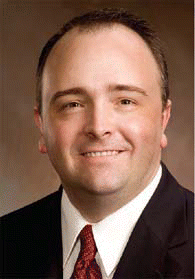Tracheostomy is the old-fashioned approach, but this doesn’t directly address the obstruction, Dr. Collins said. Tracheostomy has inherent risks and is less than ideal, especially with the current technologies we have available, he continued.
Explore This Issue
May 2008Supraglottoplasty involves trimming some of the redundant floppy tissue from the supraglottis or the area above the vocal cords. This can be accomplished with microinstruments such as microscissors and micro cup forceps (also called cold instrumentation). The CO2 laser represents a step forward, and the microdebrider has become the technique of choice for both Dr. Zalzal and Dr. Collins. Cold steel instruments are miniaturized instruments for grabbing the redundant tissue and resecting it. With the CO2 laser, the tissue is vaporized. The microdebrider is a small shaving instrument with an oscillating blade for tissue removal combined with suction to pull the tissue into the tip.
Which Technique to Use?
The microdebrider is one of several techniques for supraglottoplasty, Dr. Zalzal said.
All of these tools accomplish the same goal-that is, to remove redundant tissue causing obstruction. I can’t think of situations where a patient [with laryngomalacia] would be a candidate for one of these procedures and not another. The technique of choice depends on surgeon preference. To the best of my knowledge, there is no controversy about using the microdebrider. I trained with Dr. Zalzal using this instrument, and I have had good results, Dr. Collins commented.
The techniques all have advantages and disadvantages. Tracheostomy is uncomfortable for the patient and carries the risk of bleeding and lung damage with pneumothorax, and poses long-term risks as well. The tracheostomy tube can fall out or become plugged by patient secretions and mucus; infections can arise at the site of insertion, and the patient can develop scar tissue secondary to the tracheostomy tube. Cold instrumentation can cause increased bleeding. The laser technique has the advantage of hemostasis, coagulating blood vessels with little bleeding. However, with the laser, there is always the inherent risk of burning the patient or the staff, as well as the risk of an airway fire.
The main advantage of the CO2 laser is that it is very accurate and practically bloodless, Dr. Zalzal commented. The disadvantages are that it is time-consuming, carries the theoretical risk of fire, some patients have pain for a day or two after laser surgery, and the laser cannot be used with an endotracheal tube because of the risk of fire. Anesthesia for CO2 laser surgery becomes cumbersome because of the need to ventilate the patient, he added.

Leave a Reply